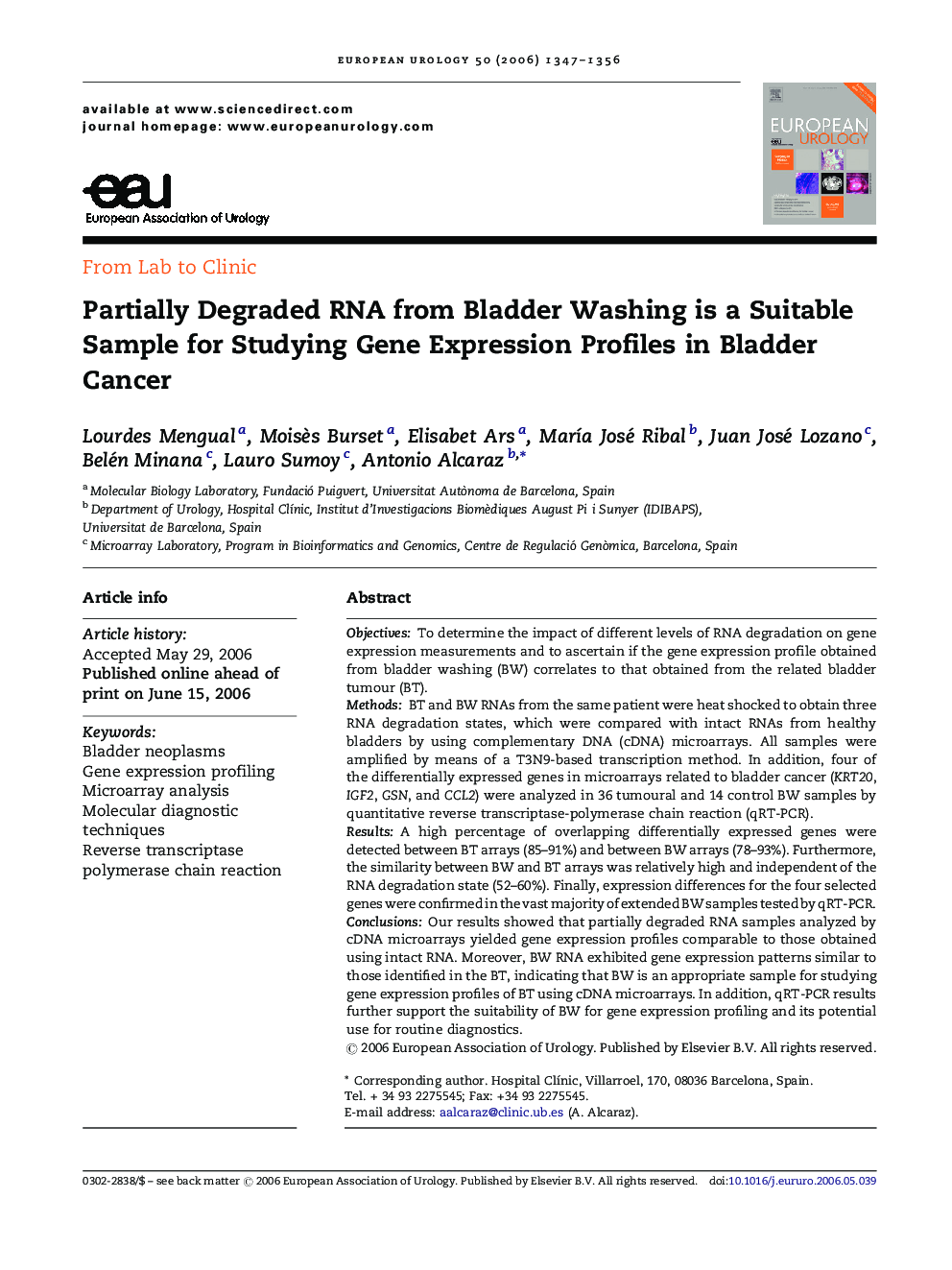| Article ID | Journal | Published Year | Pages | File Type |
|---|---|---|---|---|
| 3926749 | European Urology | 2006 | 10 Pages |
ObjectivesTo determine the impact of different levels of RNA degradation on gene expression measurements and to ascertain if the gene expression profile obtained from bladder washing (BW) correlates to that obtained from the related bladder tumour (BT).MethodsBT and BW RNAs from the same patient were heat shocked to obtain three RNA degradation states, which were compared with intact RNAs from healthy bladders by using complementary DNA (cDNA) microarrays. All samples were amplified by means of a T3N9-based transcription method. In addition, four of the differentially expressed genes in microarrays related to bladder cancer (KRT20, IGF2, GSN, and CCL2) were analyzed in 36 tumoural and 14 control BW samples by quantitative reverse transcriptase-polymerase chain reaction (qRT-PCR).ResultsA high percentage of overlapping differentially expressed genes were detected between BT arrays (85–91%) and between BW arrays (78–93%). Furthermore, the similarity between BW and BT arrays was relatively high and independent of the RNA degradation state (52–60%). Finally, expression differences for the four selected genes were confirmed in the vast majority of extended BW samples tested by qRT-PCR.ConclusionsOur results showed that partially degraded RNA samples analyzed by cDNA microarrays yielded gene expression profiles comparable to those obtained using intact RNA. Moreover, BW RNA exhibited gene expression patterns similar to those identified in the BT, indicating that BW is an appropriate sample for studying gene expression profiles of BT using cDNA microarrays. In addition, qRT-PCR results further support the suitability of BW for gene expression profiling and its potential use for routine diagnostics.
